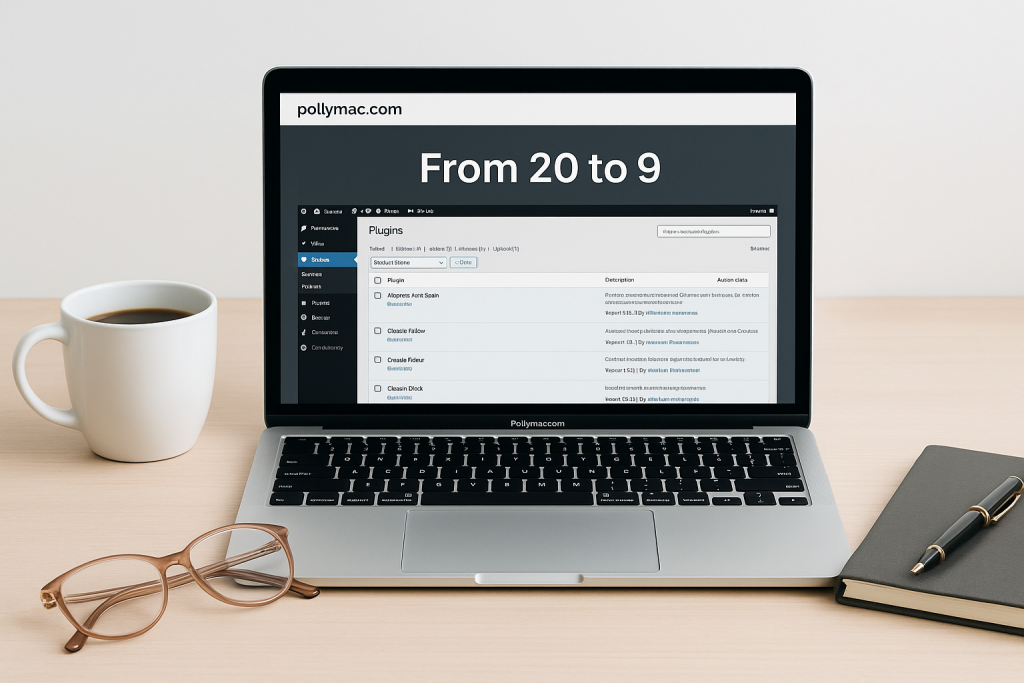This blog post is about using ‘The Blogging Workshop’, which is included in the Online Success Coaching program (OSC) run by John Thornhill and Randy Smith. With this included in the program, those students who need help are guided through setting up their own blogs and web pages.
Why Plugins Matter (But Can Also Be Overwhelming)
When WordPress is installed, it usually comes with several plugins already installed. These plugins provide extra facilities that can be used to improve your websites. Improvements such as:
- Catch spam comments
- Stop brute force attacks
- Speed up your load time
- Help back up your site
- And many other things…
But remember that too many plugins will likely slow down your website or cause security issues. So be vigilant and keep an eye on your plugins.
Spring Cleaning The Plugin Page
My new website already had several plugins installed and activated when I first installed it. In fact, there were way too many, twenty. John takes you through the installed plugins and advises you on which ones to keep and activate, and which to deactivate and delete.
The classic editor is one plugin that John recommends that we install. It is much easier for some people to use than the block editor introduced in the last few years. Although many people use the block editor, others much prefer to use the classic editor.
After doing my housework on the plugins page, I now have nine active plugins on my website, down from twenty.
Free Is Fine (For Now)
John explained that the free versions of the plugins are usually all that is needed for your site. There is no need to spend money on the Pro versions just yet. When you can afford it, you can always investigate the Pro versions and update your plugins if you feel the need. You should always take care when deciding which plugins to use on your site. Only keep what you need and upgrade them as necessary.
Keep It Lean and Mean
Too many plugins can be bad for your site; they can seriously slow it down and negatively influence its performance. So, you need to look at your plugins and remove those you don’t need. So go through those plugins and scrutinise them thoroughly. Remember, quality is so much more important than quantity when it comes to plugins on your site.
Finally
Remember to always keep your WordPress site and all your plugins up-to-date. Updating your plugins is a task that is easily accomplished from your plugins page. But before you update anything, be sure to back up your webpage/blog. A plugin like Backuply makes that process quick and easy.
A Quick Recap:
- Audit your plugins: delete what you don’t need
- Install the Classic Editor if you prefer a simple layout
- Stick with free versions unless you absolutely need more
- Always back up your site before updates
Keep everything updated regularly
Until next time,
PollyMac
p.s. Don’t forget to check out John & Randy’s Coaching Program



